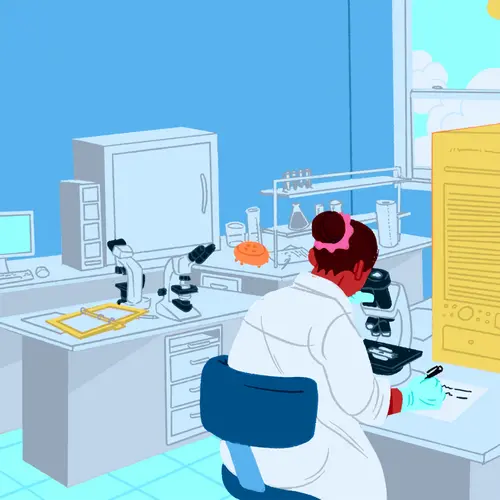A radiation "burn" or rash is a common side effect of radiation therapy for cancer. It’s also called radiation dermatitis. There’s no clear way to stop it from happening. But there’s a lot you can do to take care of your skin if you get one. Here’s what you need to know.
Symptoms
At first, your skin may look:
- Red
- Irritated
- Swollen
- Sunburned
- Tanned
After a few weeks, the skin may:
- Dry out
- Flake
- Itch
- Peel
A radiation burn can range from mild to severe. It depends on things like which part of your body was treated, how much radiation you received, and how long. You may be more likely to get a radiation burn if you’re also doing chemotherapy.
The symptoms tend to go away slowly once you finish treatment. In some people, treated skin may stay darker and feel more sensitive.
Treatment
Tell your doctor right away if you have symptoms of a radiation burn or other skin changes. They’ll tell you how to keep the irritation from getting worse and avoid an infection.
There’s no standard treatment for radiation burns. Your doctor may recommend moisturizing emollient creams or prescribe steroid medications that you put on your skin. Don’t use any OTC skin product without talking to your doctor first. They need to make sure it won’t irritate the skin or affect your radiation treatment.
In general, call the doctor if your treated skin:
Self-Care Tips
It’s important to go extra easy on your skin while it heals. Some things you can do are:
Wear loose clothes made of soft, smooth material. Avoid wearing tight or stiff clothes with rough textures over treated skin. Don’t starch your clothes, either.
Don’t scratch, rub, or scrub. If your doctor tells you to cover or bandage the treated skin, use tape that’s made for sensitive skin, like paper tape.
Avoid ice packs or heating pads. Don’t use them unless your doctor says it’s OK. These may aggravate your skin.
Shield your skin from sunlight. It may be more sensitive to the sun’s rays. If you can, cover the treated area with clothes that have a dark color or built-in UV protection. Also ask your doctor or nurse if you should put sunscreen on the treated skin. If they give you the OK, use a broad-spectrum sunscreen that has an SPF of at least 30. Keep protecting your skin from the sun even after you finish treatment.
Use lukewarm water and mild soap when you wash. Hot water may hurt. Let the water run over your treated skin, and don’t rub it. It’s extra important not to rub off the ink marks your health care team uses for your radiation therapy until treatment ends.
Talk to your doctor before you shave. If you got treatment on a hairy part of skin that you want to shave, the doctor may tell you to use an electric shaver. It can be safer and gentler than a razor blade.
Don’t use skin care products on the treated area. They may bother your skin. And some might affect how much radiation your body absorbs. During radiation therapy and for several weeks after, talk to your doctor before you use:
- Powders
- Creams
- Perfumes
- Deodorants
- Body oils
- Ointments
- Lotions
- Hair-removal products
- Home remedies

